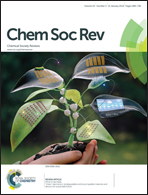MicroRNAs as novel biological targets for detection and regulation
Abstract
MicroRNAs are being considered as a novel type of bio-markers and potential therapeutic targets for various diseases. Diverse chemical tools are being developed for the detection or regulation of microRNAs with bio-medical implications. Chemical probes have been developed for use in combination with in situ signal amplification strategies to realize sensitive detection of microRNAs of low abundance. Regulation of microRNAs aberrantly expressed in tumours represents a new approach to cancer chemotherapy. Synthetic oligonucleotides including antisense oligonucleotides and microRNA mimics have been successfully delivered into cells or tissues to inhibit or enhance the function of specific endogenous microRNAs. Small-molecule modifiers of microRNAs that modify the expression or function of endogenous microRNAs are emerging not only as useful probes to explore microRNA-involved regulatory networks, but also as potential therapeutic reagents. In this tutorial review, we discuss the strategies developed by chemists in recent years for microRNA detection and regulation, with a focus on the potential of these chemical tools in microRNA-related biomedical applications.


 Please wait while we load your content...
Please wait while we load your content...